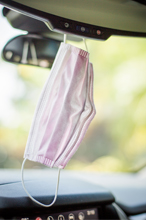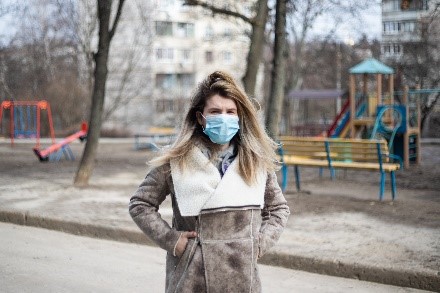Supporting the Child Welfare Workforce During the Coronavirus Pandemic: Provision of Personal Protective Equipment (PPE)
At the beginning of the Coronavirus pandemic some child welfare jurisdictions required continued, in-person contact with children and families, and workers struggled to obtain appropriate personal protective equipment (PPE), including masks, gloves, gowns, hand sanitizers, to protect themselves (and their families), as well as their clients. In March of 2020, the National Council on Juvenile Crime and Delinquency conducted a survey of juvenile justice and child welfare agencies in 20 states on agency response to COVID-19. Child welfare agency respondents reported that inadequate PPE was the most significant challenge they faced at that point in the pandemic. Survey recommendations included increased access to gloves, masks, and other PPE for use in interactions with families and children. Jurisdictions acted in a variety of ways to support their child welfare workforce.
The U.S. Department of Health and Human Services (HHS) urged state governors to classify child welfare workers as level one first responders allowing them easier access to appropriate PPE. Similarly, the Children’s Bureau sent a letter to child welfare leaders urging them to work with public health and emergency management in their states to strategize on obtaining PPE. The federal government specified that certain federal funds could be used to pay for PPE for child welfare workers tasked with face-to-face contact with children and families.
 Jurisdictions participating in the Quality Improvement Center for Workforce Development (QIC-WD) were no different than other states facing the lack of PPE. For example, Virginia’s QIC-WD Site Implementation Manager Laura Polk discussed the challenge the state faced in getting basic equipment that firefighters, police, and health professionals already had access to. “When the pandemic really hit Virginia hard, starting in mid-March [2020], frontline workers had not yet been designated as first responders. This was an obstacle preventing us from getting basic PPE for workers who were responding to abuse and neglect allegations and ensuring the safety of the children in our care. Finally, our governor did designate child welfare workers as first responders for the purposes of obtaining PPE.”
Jurisdictions participating in the Quality Improvement Center for Workforce Development (QIC-WD) were no different than other states facing the lack of PPE. For example, Virginia’s QIC-WD Site Implementation Manager Laura Polk discussed the challenge the state faced in getting basic equipment that firefighters, police, and health professionals already had access to. “When the pandemic really hit Virginia hard, starting in mid-March [2020], frontline workers had not yet been designated as first responders. This was an obstacle preventing us from getting basic PPE for workers who were responding to abuse and neglect allegations and ensuring the safety of the children in our care. Finally, our governor did designate child welfare workers as first responders for the purposes of obtaining PPE.”
The QIC-WD surveyed two sites in late spring 2020 (May – June) and found varying access to PPE. In one site, only 46% of staff agreed or strongly agreed that their health had been well protected. Specifically, a little over 71% of staff received some sort of PPE including disposable masks (68%), cloth masks (64%), hand sanitizer (67%), gloves 53%, disinfectant wipes (50%), and protective eyewear or clothing covers (<5%). Only 31% of staff in that site received training on how to mitigate the risk of contagion while doing in-person contacts with families and supporting their own health, and only 14% received training in ensuring the health of their own family.
 The other surveyed site was more successful in acquiring and distributing PPE. Ninety-one percent (91%) of staff in that site agreed or strongly agreed that their health had been well protected. There, 94% of staff received some sort of PPE including cloth masks and gloves (94%), disposable masks (93%), hand sanitizer (92%), disinfectant wipes (91%), protective clothing cover (71%), and protective eyewear (68%). In addition, 57% of staff received training on how to mitigate risk of contagion while doing in-person contacts with families, and 54% received training on supporting their own health and preventing contagion. Only 30%, however, received training on how to support the health of their own families which may have contributed to some health worries. Thus, protection of child welfare staff varied widely.
The other surveyed site was more successful in acquiring and distributing PPE. Ninety-one percent (91%) of staff in that site agreed or strongly agreed that their health had been well protected. There, 94% of staff received some sort of PPE including cloth masks and gloves (94%), disposable masks (93%), hand sanitizer (92%), disinfectant wipes (91%), protective clothing cover (71%), and protective eyewear (68%). In addition, 57% of staff received training on how to mitigate risk of contagion while doing in-person contacts with families, and 54% received training on supporting their own health and preventing contagion. Only 30%, however, received training on how to support the health of their own families which may have contributed to some health worries. Thus, protection of child welfare staff varied widely.
According to the National Governor’s Association, states prioritized child welfare agencies to receive PPE. State governors issued executive orders in at least 19 states listing child welfare, child protection and/or related agencies as essential government functions that were to remain in operation during the pandemic. Like Virginia, the North Carolina Department of Health and Human Services classified child protective services workers as emergency first responders, allowing them to access necessary PPE.
One year into the Coronavirus epidemic, the nation’s child welfare workforce operates under extraordinary circumstances - ensuring children’s safety and well-being while facing travel restrictions, social distancing, and strict safety protocols – yet they continue to do their job. Most workers now have the equipment necessary to prevent the spread of the Coronavirus when they are in the field, and many have been able to do more work from home, yet the on-going stress of the pandemic continues to challenge the child welfare workforce. For more information see Supporting the Child Welfare Workforce During the Coronavirus Pandemic: Implementing Technology Supports and Addressing Worker Stress and Trauma.